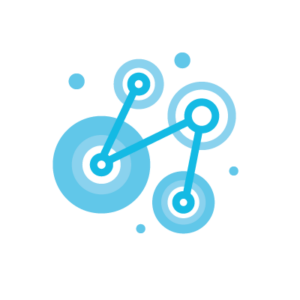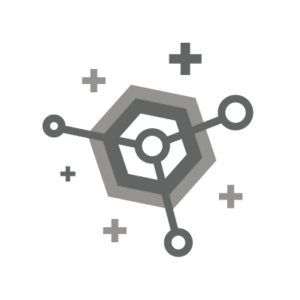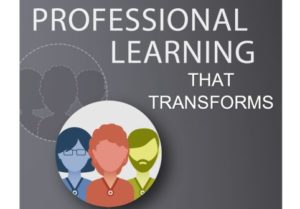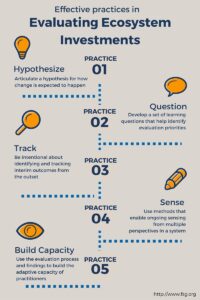News, resources and ideas for cross-sector collaborations that engage STEM learners everywhere
Career Pathway Systems: Lessons from Miami
American Youth Policy Forum (AYPF) staff and a group of national leaders recently visited Miami-Dade County Public Schools, renowned for its commitment to providing students with multiple pathways to success. Their career pathway efforts center around programs of study which build students’ competencies in core academic and career areas and provide the opportunity to earn postsecondary and workforce credentials. Learn more here.
Classroom to Career: Leveraging Employment Data to Measure Labor Market Outcomes
The Institute for Higher Education Policy (IHEP) report explores the challenges and opportunities to connect state and federal level employment data with student records to determine labor market outcomes for postsecondary programs and institutions. The report, written by Rachel Zinn, Director of the Workforce Data Quality Campaign, proposes strategies to help agencies and institutions more effectively collect and share information, and provides recommendations on federal and state policies to better inform students and other key stakeholders. Read more here.
Talent Orchestrators: Scaling Youth Employment Through Business-Facing Intermediaries
A recent paper from the U.S. Chamber of Commerce Foundation examines the role of “business-facing intermediaries” in helping to address the problem of youth unemployment at a time when the business community is in dire need of talent. Noting that half of employers are unable to fill vacant positions and only 11% of employers feel newly credentialed graduates are ready for work, the paper provides concrete examples of how business-facing intermediaries – such as the Boston Private Industry Council, STEP-UP Achieve in Minneapolis, and i.c. stars in Chicago, among others, are producing positive results for youth and the private sector. Read the report here.
The Path Least Taken III: Rigor and Focus in High School Pays Dividends in the Future
A new report from the Center for Public Education (CPE), a policy research initiative of the National School Boards Association, finds that high school graduates who enter the workforce directly instead of attending college can achieve similar and, in some cases, greater economic and social success than college goers, provided those graduates received a rigorous education during their high school years. The report, focuses on a group of high school graduates the authors describe as “high credentialed,” those who earned at least a C+ grade point average; completed Algebra II, advanced biology, and at least three career and technical education courses in a specific labor market area; and obtained a professional certification or license. Read the report here.
STEM Classroom to Career: Opportunities to Close the Gap
The Research Consortium on STEM Career Pathways, led by the Educational Research Center of America, conducted a national survey of high school students in STEM classes during Spring 2015. Their new report draws on those data to identify opportunities, challenges, and promising practices for leveraging equity to meet STEM workforce needs. Read the report here.
Who You Know Matters. So Why Isn’t Edtech Helping Students Build Social Capital?
Julia Freeland Fisher (@juliaffreeland), Director of Education Research at the Clayton Christensen Institute, offers a thought-provoking post urging the EdTech sector to focus more on developing and scaling technologies aimed at helping students build social capital. “In the present moment, online or blended interactions may pale in comparison to face-to-face relationships. But these technology-enabled interactions need not compete head on with state-of-the-art face-to-face supports. Instead, they promise to offer new connections in circumstances where the current alternative is nothing at all.” Read more here.
Every Hour Counts Ten-Year Convening Report
The expanded learning organization Every Hour Counts – leader of the Frontiers in Urban Science Education Project – releases a report on its recent convening of citywide intermediary and foundation leaders to mark the 10-year anniversary of its founding. The report highlights the potential of expanded learning and K-12 school systems to work together on social-emotional learning, school climate, and decreasing inequities in access to high quality learning opportunities. Read the report here.
Connecting the Dots: Data Use in Afterschool Systems
When it comes to the use of data in afterschool systems, people and processes are as important as technology, a new study commissioned from Chapin Hall by The Wallace Foundation finds. This interim report examines afterschool data systems in nine cities that are part of The Wallace Foundation’s Next Generation Afterschool System-Building initiative, a multi-year effort to strengthen systems that support access to and participation in high-quality afterschool programs for low-income youth. The cities are Baltimore, Md., Denver, Colo., Fort Worth, Texas, Grand Rapids, Mich., Jacksonville, Fla., Louisville, Ky., Nashville, Tenn., Philadelphia, Pa., and Saint Paul, Minn. Read the report here.
Badging Practice Brief: Recommendations from Boston Beyond’s 2015-16 Digital Badge Pilot
Boston After School & Beyond – lead for BoSTEM – releases a brief summarizing lessons from its 2015-2016 Badge Pilot (supported by the Noyce Foundation) in which seven long-time partners of Boston Beyond with experience measuring program quality and skill outcomes for youth piloted a new digital badging system. These programs predominantly served students in grades 6 through 8. The brief contains concrete, on-the-ground recommendations for practitioners implementing digital badging initiatives. Read the report here.
Helping Teachers of Mathematics Integrate the Knowledge and Culture of Families into Their Practice 
Contrary to popular assumption – mathematics is not culture-free. This Harvard Family Research Practice post, created in partnership with TODOS: Mathematics for ALL (TODOS), an international organization that advocates for equity and high-quality mathematics education for all students, particularly those who are Latino or Latina, delves into how mathematics teachers can establish equitable, rigorous, and coherent mathematics programs in their classrooms. For example, “families, in particular parents who have been schooled outside the U.S., are likely to bring different ways to do mathematics. For example, families might use a comma, instead of a period, to indicate decimals. Differences might also extend beyond simple functions. For example, families might view that the long division algorithm traditionally taught in the U.S. is “inefficient” because students should be able to do the subtraction in their head. When designing initiatives for family engagement in mathematics, it is important that both schools and families are aware of these cultural differences and learn about and from them.” Read the full post here.
Professional Learning and Development for Educators
 Getting Smart has released a compendium of resources on professional learning developed in partnership with High Tech High. Their vision is that “professional learning ought to reflect what we want for young people–learning that is engaging, relevant and customized to specific, individual learning needs.” Download the resources here and an infographic here.
Getting Smart has released a compendium of resources on professional learning developed in partnership with High Tech High. Their vision is that “professional learning ought to reflect what we want for young people–learning that is engaging, relevant and customized to specific, individual learning needs.” Download the resources here and an infographic here.
Tools for Promoting Learner Centered STEM
The Getting Smart blog released the Getting Smart on Learner-Centered STEM–a culmination of a seven-blog series created by Getting Smart and Harmony Public Schools over the last six months. The series and collection describe Harmony’s approach to learner-centered STEM education that prioritizes deeper, project based learning. The partners offer 11 key elements of learner-centered STEM. To see videos, images and links to more on student STEM projects and events, click here.
Next Generation STEM Learning for All: Envisioning Advances Based on NSF Supported Research
This report synthesizes a one-day National Science Foundation (NSF)-supported Forum, “Next Generation STEM Learning for All,” organized by Education Development Center (EDC) and SRI International through the STEM Learning and Research Center (STELAR) at EDC, the Community for Advancing Discovery Research in Education (CADRE) at EDC, and the Center for Innovative Research in Cyberlearning (CIRCL), working in close collaboration with NSF and the White House Office of Science and Technology Policy. The Forum engaged prominent scientists in STEM learning research and school, community, and policy leaders in addressing the question, “How can research-based findings and advances help society to re-envision STEM learning and education?” and related questions. Key takeaways discussed in the report focus on four thematic areas: (1) research-based advances; (2) multiple stakeholder communities; (3) social justice and equity; and (4) scale and sustainability. Read the report here.
Ensuring Equity in ESSA: The Role of N-Size in Subgroup Accountability
The academic needs of large numbers of African American and Latino students, students from low-income families, English language learners, students with disabilities, and other groups of traditionally underserved students in 27 states and Washington DC could be ignored under a new proposal from the U.S. Department of Education, according to a new report by the Alliance for Excellent Education. The report examines where individual states set their “n-size,” the number at which students in these groups will trigger improvement actions for low academic performance. “A high n-size could mean ‘no action’ for many students, especially students of color and students from low-income families who make up roughly half of all K–12 students yet graduate from high school at rates much lower than other students,” said Alliance for Excellent Education President Bob Wise. The report recommends that states set their n-size at ten or fewer students. Currently, however, only thirteen states set an n-size of ten or fewer students. Read the report here.
National Academies Teacher Advisory Council Appoints Experts in Afterschool, Informal and Engineering Education
For the first time since its inception, the National Academies Teacher Advisory Council has appointed two new members with expertise from the afterschool and informal education communities: 1) Dr. Dennis Schatz, Senior Advisor at Pacific Science Center in Seattle, WA and 2) Dr. Michael Kennedy, research professor in the Department of Neurobiology and Physiology, Northwestern University; founding director of Science in Society, a research center for science education and public outreach; and co-founder of Science Club, a mentor-based afterschool science initiative, developed in partnership with the Boys & Girls Clubs of Chicago and teachers in Chicago Public Schools. The Council also appointed Jose Rivas, teacher at Lennox Math, Science and Technology Academy since 2005 for his expertise in engineering education. Rivas previously taught physics, AP physics, and geology at Roosevelt High School in Los Angeles. For more information on the Teacher Advisory Council click here.
RESOURCES FOCUSED ON CROSS-SECTOR COLLABORATIONS
 Evaluating Ecosystems Investments
Evaluating Ecosystems Investments
Responding to a “lack of understanding around the underlying principles that make an effective evaluation for ecosystem strategies,” FSG and the Omidyar Network have released a report that identifies five effective practices in evaluating ecosystem investments. Read the report here.
Transforming Government, Transforming Communities: Strengthening the Federal Workforce to Help Communities Implement Place-Based Initiatives
The Forum for Youth Investment’s Transforming Government, Transforming Communities examines cross-sector “place-based initiatives” of the Obama Administration. Place-based initiatives concentrate funding, flexibility, technical assistance and other support to help selected sites forge integrated approaches to community transformation that cut across individual programs, departments and sectors. The executive summary and full report are available here.
OTHER STEM RESOURCES
Students on STEM Survey Results
A new survey of American teenagers from the Amgen Foundation and Change the Equation finds that teens like science and would welcome the opportunity to do more engaging, hands-on science in school. Yet the survey also reveals that teens lack access to real-world science experiences, out-of-school opportunities, and professional mentors, which is limiting their chances to pursue science any further. Read the full survey results here.
2016 NSF Video Showcase – Advancing STEM Learning For All: Sharing Cutting Edge Work and Community Discourse
Between May 17-23, more than 23,500 unique visitors in 145 countries viewed 150+ project videos submitted as part of the 2016 Video Showcase – Advancing STEM Learning For All. See the videos and community discussion here.
National Mentoring Program Survey 2016
MENTOR, in conjunction with the Mentoring Partnership Network, is conducting a National Mentoring Program Survey, designed to gather information about the agencies that run mentoring programs and the details of those programs and the youth they serve. If a partner in your ecosystem operates a mentoring program, please forward them this link to complete the survey.
EvanSTEM Fifth Ward STEM Fest
Congratulations to the EvanSTEM ecosystem on its recent Fifth Ward STEM Fest! Said Director Kirby Callam: the primary purpose of the Fifth Ward STEM Fest was to provide parents and their children “a chance for hands-on experiences and to bring to life what STEM means. Many students think STEM is for others who are ‘science people,’ and they think ‘I’m not one of them.’ So we’re trying to break down those walls a little bit. There are second-graders who don’t like math. It’s not because they’re not good at it. It’s just because they had a bad experience and they feel they’re not good at it, and so they want to run away from it. So here’s a chance to make science and math come to life, and for children to understand it’s actually fun.” Mr. Callam added, “A key part of the STEM fest was to get parents engaged and supportive. They get to see their children excited and they think, ‘I want you to do more of this and let’s start finding ways for you to do that.’ Read more here.
July 10-12, 2016: Computer Science Teachers Association (CSTA) Annual Conference, San Diego, CA. CSTA 2016 is a professional development opportunity for CS and IT teachers/administrators who need practical, classroom-focused information to help prepare their students for the future. Participants will have the opportunity to learn, network, and interact, while exploring issues and trends relating directly to the classroom. Early bird registration ends April 1, 2016. Register.
July 14, 2016: National Summer Learning Day. The National Summer Learning Association (NSLA) encourages communities across the country to celebrate the importance of summer learning programs on National Summer Learning Day: July 14, 2016. Visit the NSLA website to find an event near you, register your own event, or explore summer learning resources for families or communities.
July 19-23, 2016: Visitor Studies Association Conference, The Data Revolution, Boston, MA. VSA is a professional organization focusing on all facets of the visitor experience in museums, zoos, nature centers, visitor centers, historic sites, parks and other informal learning settings. Register here.
August 3-4, 2016, Chicago, IL. Every Hour Counts Third Annual System-Building Institute. This cross-city learning institute will bring together 15 communities, with a priority on communities from the Midwest, to tap the expertise of Every Hour Counts partner organizations and to build on one another’s ideas for developing and strengthening after-school, summer, and expanded learning programs that engage community partners and schools. If a team from your ecosystem would like to attend, please email Tasha Kellett as soon as possible.
Sept. 20–22, 2016: StriveTogether Cradle to Career Network Convening, Rise Up: Education Excellence for Every Child. Memphis, TN. This conference focuses on collective impact partnerships in communities across the country and how they can help make education equity a reality. For more information, contact Kelly Robinson at robinsonk@strivetogether.org.
Sept 20-22, 2016: Science Media Awards & Summit in the Hub 2016. Boston, MA. 300+ science media stakeholders will gather in Boston to celebrate exceptional media, cutting-edge discoveries. Learn more here.
Sept. 24–27, 2016: Association of Science Technology Centers (ASTC) Annual Conference, Tampa, FL. Hosted by the Museum of Science and Industry– partner in the Tampa Pay STEM Network ecosystem. Register.
Oct. 18-22, 2016: North American Association for Environmental Education 2016 Conference and Research Symposium: From Inspiration to Impact. Madison, WI. Annual conference for environmental education professionals, from classroom teachers and teacher educators to nature center staff to climate science researchers and everyone in between. Learn more here.
Oct. 24–26, 2016: Summer Changes Everything Annual Conference Joins with School’s Out Washington’s Bridge Conference, Dare to Disrupt! The Pathway to Excellence and Equity in Education. Seattle, WA. The National Summer Learning Association joins with School’s Out Washington to present This conference attracts practitioners, policymakers, funders and researchers across the OST spectrum and includes pre-conference sessions, workshops, and meetings focused on summer learning. Learn more here.

